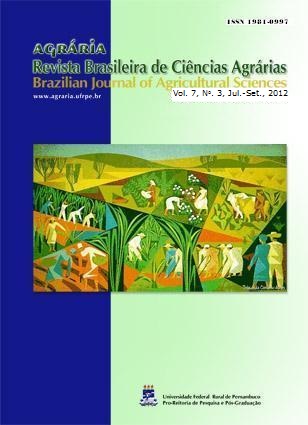Maintenance of the yield of sweet potato from virus-free stock plants
DOI:
https://doi.org/10.5039/agraria.v7i3a1716Keywords:
Ipomoea batatas, illness, morphology, tuberous root, virus diseaseAbstract
The sweet potato crop suffers from some phytosanitary problems, among them are those of viral etiology that cause decrease of productivity and quality of tuberous roots. This study aimed to compare the productivity of tuberous roots and their format from sweet potato plants originating from virus-free materials and from materials of commercial planting, on function of the exposure time of propagating material to possible infection for virus. The
experiment was set up with branches from plants with 3, 6, 9 and 12 months of permanence in the multiplication field. The experimental design was completely randomized in a 4 x 2 factorial scheme (exposure time of stock plants to field conditions x source material). The results show that the use of branches of plants from virus-free stock plants provides higher total and commercial yields of tuberous roots than the use of branches from plants from stock plants from commercial plantations. It is also observed that the roots from plants originating from virus-free stock plants have greater diameter per unit length.



